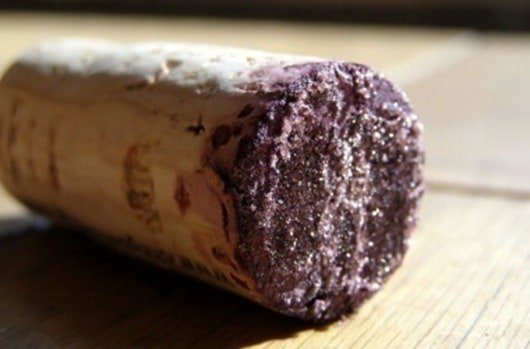
Grapes Parellada, Chardonnay, Macabeo and Xarel-lo (traditional Cava grapes). Facts If you’ve ever seen the Cristalino before, you might notice that they’ve had a change of label. Why you ask? Well, they pissed off Cristal, that’s why! Let me take you back to 2006, Louis Roederer, producer of Cristal Champagne decided that Cristalino beared too much of a resemblance to their over-priced fizz. Long story short, Roederer won and Cristalino were forced to relabel…
Blog Your Wine
We firmly believe that the internet should be available and accessible to anyone, and are committed to providing a website that is accessible to the widest possible audience, regardless of circumstance and ability.
To fulfill this, we aim to adhere as strictly as possible to the World Wide Web Consortium’s (W3C) Web Content Accessibility Guidelines 2.1 (WCAG 2.1) at the AA level. These guidelines explain how to make web content accessible to people with a wide array of disabilities. Complying with those guidelines helps us ensure that the website is accessible to all people: blind people, people with motor impairments, visual impairment, cognitive disabilities, and more.
This website utilizes various technologies that are meant to make it as accessible as possible at all times. We utilize an accessibility interface that allows persons with specific disabilities to adjust the website’s UI (user interface) and design it to their personal needs.
Additionally, the website utilizes an AI-based application that runs in the background and optimizes its accessibility level constantly. This application remediates the website’s HTML, adapts Its functionality and behavior for screen-readers used by the blind users, and for keyboard functions used by individuals with motor impairments.
If you’ve found a malfunction or have ideas for improvement, we’ll be happy to hear from you. You can reach out to the website’s operators by using the following email
Our website implements the ARIA attributes (Accessible Rich Internet Applications) technique, alongside various different behavioral changes, to ensure blind users visiting with screen-readers are able to read, comprehend, and enjoy the website’s functions. As soon as a user with a screen-reader enters your site, they immediately receive a prompt to enter the Screen-Reader Profile so they can browse and operate your site effectively. Here’s how our website covers some of the most important screen-reader requirements, alongside console screenshots of code examples:
Screen-reader optimization: we run a background process that learns the website’s components from top to bottom, to ensure ongoing compliance even when updating the website. In this process, we provide screen-readers with meaningful data using the ARIA set of attributes. For example, we provide accurate form labels; descriptions for actionable icons (social media icons, search icons, cart icons, etc.); validation guidance for form inputs; element roles such as buttons, menus, modal dialogues (popups), and others. Additionally, the background process scans all of the website’s images and provides an accurate and meaningful image-object-recognition-based description as an ALT (alternate text) tag for images that are not described. It will also extract texts that are embedded within the image, using an OCR (optical character recognition) technology. To turn on screen-reader adjustments at any time, users need only to press the Alt+1 keyboard combination. Screen-reader users also get automatic announcements to turn the Screen-reader mode on as soon as they enter the website.
These adjustments are compatible with all popular screen readers, including JAWS and NVDA.
Keyboard navigation optimization: The background process also adjusts the website’s HTML, and adds various behaviors using JavaScript code to make the website operable by the keyboard. This includes the ability to navigate the website using the Tab and Shift+Tab keys, operate dropdowns with the arrow keys, close them with Esc, trigger buttons and links using the Enter key, navigate between radio and checkbox elements using the arrow keys, and fill them in with the Spacebar or Enter key.Additionally, keyboard users will find quick-navigation and content-skip menus, available at any time by clicking Alt+1, or as the first elements of the site while navigating with the keyboard. The background process also handles triggered popups by moving the keyboard focus towards them as soon as they appear, and not allow the focus drift outside of it.
Users can also use shortcuts such as “M” (menus), “H” (headings), “F” (forms), “B” (buttons), and “G” (graphics) to jump to specific elements.
We aim to support the widest array of browsers and assistive technologies as possible, so our users can choose the best fitting tools for them, with as few limitations as possible. Therefore, we have worked very hard to be able to support all major systems that comprise over 95% of the user market share including Google Chrome, Mozilla Firefox, Apple Safari, Opera and Microsoft Edge, JAWS and NVDA (screen readers), both for Windows and for MAC users.
Despite our very best efforts to allow anybody to adjust the website to their needs, there may still be pages or sections that are not fully accessible, are in the process of becoming accessible, or are lacking an adequate technological solution to make them accessible. Still, we are continually improving our accessibility, adding, updating and improving its options and features, and developing and adopting new technologies. All this is meant to reach the optimal level of accessibility, following technological advancements. For any assistance, please reach out to


George Vierra
Wine Crystals: Wine Diamonds
On occasion, when a bottle of wine
is opened, you will notice a crystalline deposit that looks like a cluster of
coarse salt at the bottom of the bottle or possibly glistening at the end of
the cork. The clear diamond-like crystals found in wine are potassium
bitartrate in crystalline form. This is basically the same stuff as the cream
of tartar in your kitchen pantry.
The principal acids found in
grapes, and hence wine, are tartaric and malic acids. These acids are produced by
the grape as it develops. Potassium also exists naturally in grapes. When the
wine is under chilly conditions, the tartaric acid and potassium bind together.
The marriage produces potassium bitartrate (KHT) crystals: wine diamonds. They
are completely harmless and quite natural. In Europe
these wine diamonds are accepted as a sign that the wine is a natural one. To
many these diamonds are even appreciated. Americans, however, are used to wine
being without the crystals.
The winery, in order to fulfill the
consumers’ expectations, forces a pre-crystallization at the winery. This
process is called “cold stabilization”. It beats the crap out of the wine! The
wine is chilled to just above freezing; generally 21º to 23º F. It is
held at this temperature for about two weeks. During that time, the KHT is
formed in the wine. In order to remove all the KHT, the wine is filtered at
this cold temperature. The KHT, and host of other things, are removed from the
wine at this cold temperature. During this handling, the wine also becomes
saturated with oxygen. That’s a no-no. After the cold filtration, the wine is
then run through a heat exchanger to bring it up to cellar temperature. But the
wine must now be sparged with nitrogen gas to remove the oxygen, and again, a few
other aromatic compounds. Any winemaker who has ever tasted any wine before and
after “cold stabilization” wants to cry. If the winemaker is patient, this same
removal of KHT will occur over a longer period of time at cellar temperature.
Most red wines left in barrels for 12 months or more are not subjected to this
abuse. Some wineries do not want any of their wines to become “cold stabilized”
in a hurried fashion. Bravo!
So, let’s marvel at these little
wine diamonds. If you’re lucky to find them, raise your glass and enjoy the
wine with the assurance that this wine has been handled as naturally and gently
as possible and allowed to attain the highest quality.
28
October 2004 George
Vierra WineCrystals